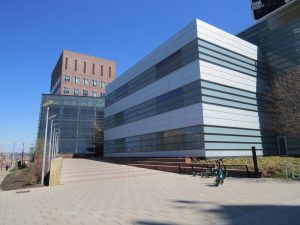SYRACUSE, N.Y. — Syracuse University announced it is investing more than $9 million in classroom and technology improvements as part of its “campus framework” plan.
The university contends a recent news release that today’s classrooms need to be “interactive, flexible and ready for collaboration.”
Crews are already working on technology-upgrade projects in classrooms, study spaces, and teaching laboratories this summer, the school said.
(Sponsored)

“They are family. They would never do that!” Our guard comes down as it is hard to imagine a family member capable of business fraud. Unfortunately, that is when the

Maximizing Tax Benefits for Energy-Efficient Buildings
The Inflation Reduction Act (IRA) of 2022 significantly enhanced the Section 179D deduction, making it even more valuable for businesses investing in energy-efficient commercial building property (EECBP) and energy-efficient commercial
Combined, the Division of Information Technology Services (ITS) and Campus Planning, Design and Construction (CPDC) are working to update technology and academic spaces in more than a dozen buildings on the Syracuse University campus.
They include Carnegie Library, the Center for Science and Technology, Crouse Hinds Hall, Eggers Hall, Flint Hall, Hall of Languages, Haven Hall, Heroy Geology Building, Link Hall, Lyman Hall, MacNaughton Hall, the Nancy Cantor Warehouse, the Physics Building, the Shaffer Art Building, Slocum Hall, and White Hall.
Syracuse University “every summer” dedicates “tremendous” resources, in dollars and personnel, “updating” the campus before students and faculty return in the fall, Michele Wheatly, vice chancellor and provost, contended in the school’s release.
“Providing a high-caliber environment that fosters learning, teaching and innovation is not only consistent with our Academic Strategic Plan, it’s also critical to attracting and retaining high-achieving students and world-class faculty scholars,” said Wheatly.
The work includes improvements for the federal Americans with Disabilities Act; audio and visual system upgrades; the installation of new “smart-teaching” stations; “complete technology overhauls;” classroom and auditorium renovations; furniture replacements; classroom-seating replacements; and the creation of new seminar rooms, meeting rooms, and classrooms.
New “smart-teaching” stations allow faculty members to present materials in a variety of ways, with the use of such equipment and technology as smartboards, projection screens, speakers and USB ports.
Pete Sala, VP and chief facilities officer, says many of the projects will help Syracuse advance its academic and research offerings.
For example, CPDC is currently constructing a new space in the Heroy Geology Building that will house the new National Science Foundation (NSF) Research Traineeship (NRT) Program, the university said.
Syracuse University is using a $3 million NSF grant awarded in April 2015 on the Education Model Program on Water-Energy Research, also known as EMPOWER.
EMPOWER involves faculty from the Department of Earth Sciences in the College of Arts and Sciences; the College of Engineering and Computer Science; the Maxwell School of Citizenship and Public Affairs; and the S.I. Newhouse School of Public Communications, according to the news release.
Contact Reinhardt at ereinhardt@cnybj.com




